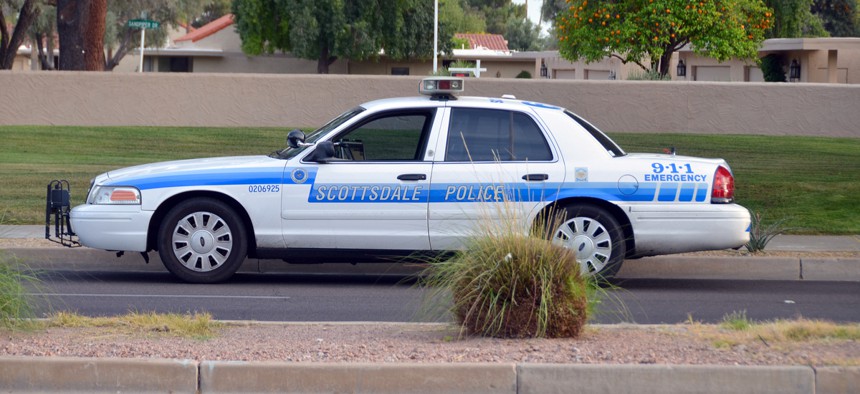The Time to Prepare for a Police Shooting Is Before It Happens

Shutterstock

Connecting state and local government leaders
In a guest article, the Maricopa County, Arizona, attorney asks: Does your community have a protocol for how to proceed after the deadly use of force by law enforcement?
This is part of an ongoing series from the National District Attorneys Association highlighting local criminal justice issues. Previous articles can be found here.
PHOENIX — The use of deadly force by law enforcement officers is potentially the single most daunting legal investigation that elected prosecutors can face during their tenure in office.
With modern cell phones, citizens can capture images, record video or even live stream events and commentary on law enforcement action. Social networking applications spread news of arrests and unedited opinions of public actions across the country at the speed of light. Also, the heightened media scrutiny that major networks render to the subject of shootings enables communities to respond to the perceived execution of justice—or lack thereof—in a variety of different manners.
No other criminal investigation has the potential to generate mass protests, civil disobedience, looting, arson, rioting, aggravated assaults and even murder than a police department’s use of deadly force. Fortunately, this extreme community response is the exception rather than the norm. But this violent and disruptive response is one that could potentially face any prosecutor and any jurisdiction in any state in the nation.
There is a growing sense of responsibility among elected prosecutors that they have an affirmative duty to assume a leadership role in the management of critical incidents. An officer involved shooting should be responded to in a manner that conveys confidence, trust, authority, transparency and justice to both the police department involved in the use of deadly force and the community that the law enforcement agency serves. One of the best ways to address a critical incident is with a formal written “Officer Involved Shooting and Use of Force Protocol” that is drafted and implemented long before the patrol officer is forced to make a deadly force encounter decision.
The written protocol is not drafted in a vacuum. Instead, prosecutors should seek out input, ideas and suggestions from local law enforcement partners. The protocol should recognize the different agencies’ capabilities and limitations. Buy-in from a jurisdiction’s law enforcement partners is critical. Without buy-in, law enforcement partners will not participate in the process, will not follow a protocol, and may actively thwart efforts to conduct a complete and thorough investigation.
Protocols are ever evolving and continually improving practices. Protocols that only achieve a certain portion of your stated objectives upon publication can always be revisited annually, or as required, to make additions, improvements or amendments to the existing written protocol.
The protocol should address details such as jurisdiction disputes and set forth prearranged conflict resolution processes to avoid elevating a critical incident into a political crisis. It should also include a conflict of interest check and a basic outline of how a critical incident investigation should normally proceed.
Every prosecution agency should have a properly trained prosecutor to serve as a law enforcement liaison. This person assists with the execution of the protocol and serves as a diplomat when disagreements, disputes and other inevitable complications arise. The document should establish timelines, deadlines and procedures for the delivery of a final investigation to the prosecution agency for a formal charging decision—and a methodology to rigorously deliberate on and present that formal charging recommendation in writing. The elected local prosecutor reviews the written recommendation and then makes a final decision. Timely notice of that decision is then distributed to the involved agency, the involved employee(s), the victim’s representative and ultimately the public.
These protocols should also address predictable contingencies. For example, the protocol should address the best practices for the review and handling of body worn cameras, dash cameras, cell phone images, and surveillance cameras. It should also address the proper release of information to the media, making certain that the police agencies understand their obligations and ethical duties during the dissemination of information to the public.
Sometimes, urgent and difficult circumstances require deviation from the written protocol—and that must be anticipated in advance. A process should be put in place to permit leaders to discuss appropriate responses to the propagation of false narratives.
The existence of the protocol and consistently executing on it brings order to chaos—it establishes predictability to the process of determining what happened to the involved officers during their interaction with a member of the community. Not only does a written protocol hold police accountable, it becomes a check and balance on the investigation process itself.
Additionally, a protocol can also be leveraged against false narratives that arise among citizens, public figures or the media. Perhaps most significantly, it reassures the public that a proper investigation will be conducted and that justice will be done. When properly drafted and consistently executed, a formal protocol becomes a key component to the peaceful and orderly resolution of a critical incident without elevating the incident to a crisis for the community.
Bill Montgomery is the county attorney in Maricopa County, Arizona.

NEXT STORY: 2017 Navigator Award Finalists: Government Allies and Cross-Sector Partners




